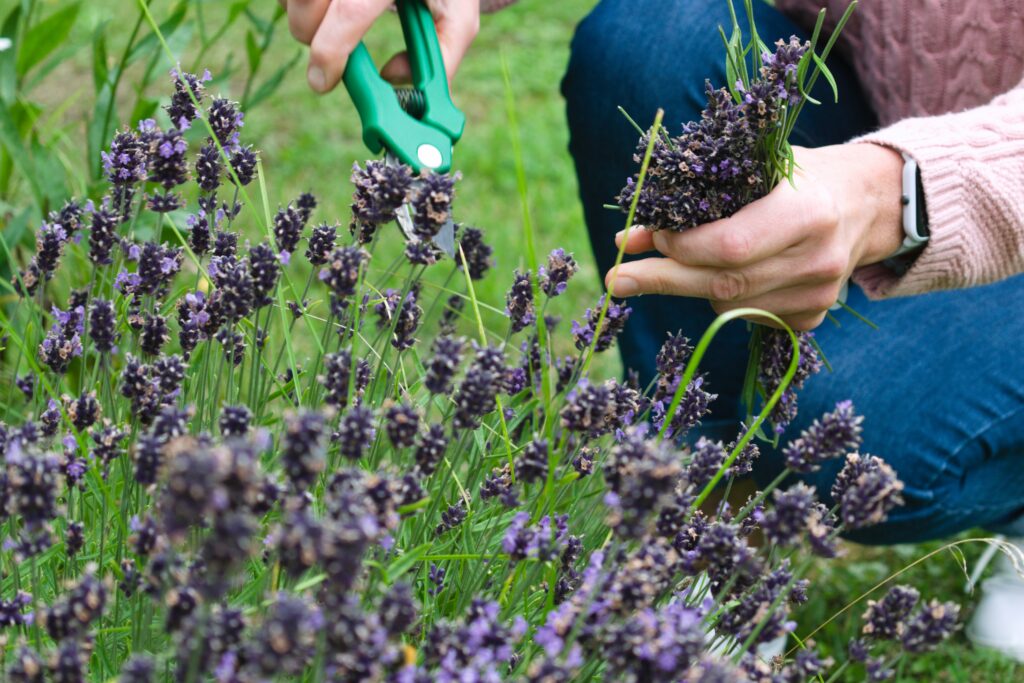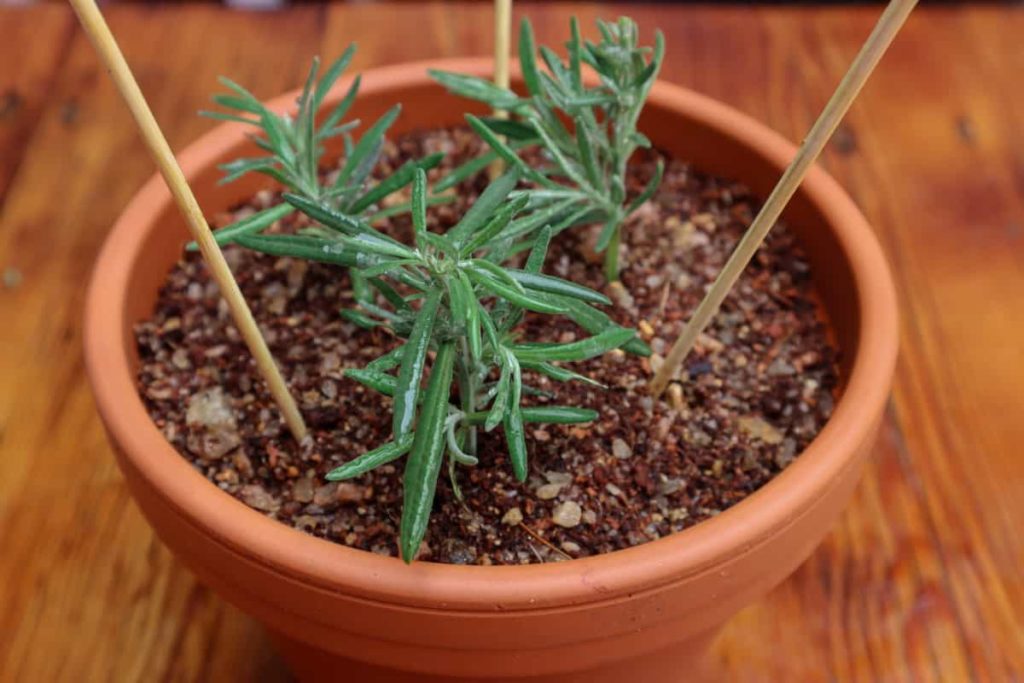
Growing lavender from cuttings – just like in the case of Ice plants or Catnip – is done by cutting a stem off the parent plant and transforming it into a new plant. This can be done with most herbs as well as many other plants.
In this article, I’ll explain how to expand your lavender crop step-by-step by rooting cuttings, including where to cut the parent plant and how to look after your cuttings to make sure they root successfully. These tips will work on any type of lavender.
Getting Started on how to propagate Lavender
- Choose a healthy plant with no dead branches or signs of disease.
- The best time to take cuttings is in early spring before the plant is flowering. Lots of new, softwood growth is available during this time.
- Use a sharp knife or pruning shears to make the cut. Don’t break stems off by hand, since this will damage the stems and make them more susceptible to airborne diseases.
What you’ll need:
- Sharp knife or pruning shears
- Rooting hormone (optional)
- Pot (large enough for an adult plant)
- Jar of water (optional)
- Potting Soil
Preparing the Cuttings for propagation
- You should identify hardwood and softwood stems on your plant. Softwood is new growth and is pale green and flexible. Hardwood growth is older growth and is hard and woody, and may break if tested.
- You can grow lavender from either softwood or hardwood cuttings – just be careful if cutting hardwood since it snaps easily. It’s safer to cut softwood but it also rots easier than hardwood.
- Use a sharp knife or pruning shears and make the cut at a 45-degree angle just above one of the leaf nodes. Cutting it at an angle makes it easier for the plant to grow its stem back.
- Your cutting should be about 6 inches long.
- Remove the leaves from the bottom half of the cutting. This is the portion that will develop roots.
Planting Lavender Cuttings
- Applying a rooting hormone or gel to the bottom half of the cutting is optional, but it will increase the chances of success.
- Fill a small pot with potting soil meant for starting plants, and make a hole for the stem with a pencil.
- Place the bottom half of the cutting into the hole, and pack the soil around it. If you used rooting hormone, don’t just push the stem into the soil, since it will rub the gel off.
- Soil should be moist, but not too much so. Fresh cuttings are susceptible to rotting if the soil is too wet.
- An alternative to planting your cutting in soil is to place the cutting into a jar of water first. This way, you can see for certain if roots are forming or not. If you use this method, make sure to change the water out every 2 to 3 days to prevent rotting.
- It’s a good idea to place a plastic bag or hood over the cutting to create a greenhouse-like environment for it. You can find plant hoods at any greenhouse or nursery.
Caring for your Cuttings
- Your cutting should be placed on a windowsill with adequate light, such as a south-facing window.
- Keep the soil moist by watering whenever the soil dries out. You can test it with your index finger.
- The cutting should be kept warm to speed up the growth process. Heated plant mats can be used for this. Don’t place your cutting in a cold room.
- If you get good quality potting soil, it should have all the nutrients your cutting needs, so you shouldn’t have to fertilize.
- Roots typically appear 3 to 6 weeks after cutting.
- Check for roots by tugging gently on the stalk. If it offers resistance then there’s a root system forming. Don’t pull too hard or more than once, since the roots are delicate at this stage.
- If you placed your cutting in water, transplant it into potting soil when you notice little white rootlets starting to appear.
Transplanting Lavender Cuttings

Once you see new growth on the cutting, it’s time to move it to its permanent home, be it a larger pot or a spot in your garden.
- Take off the plastic hood if you used one.
- If it’s a potted lavender plant, select a pot 12 to 16 inches in diameter.
- If you’re placing it in your garden, allow for 1.5 to 2 feet of space for it.
- If you grew your cutting indoors, it’s necessary to harden it off by placing it outside during the day. This will get it used to wind and varying temperatures. Not hardening off your plant will shock it and stunt its growth.
- The best time of day to transplant your rooted lavender cuttings is early evening. That way the plant can acclimatize itself before the heat of the day comes the following afternoon.
- Like with transplanting anything, keep the plant well-watered for the first few days to lessen transplant shock.
To sum it up
Lavender is easily multiplied by taking cuttings, and it’s done this way more often than propagating using lavender seeds. The success rate with lavender cuttings is very high, like with most herbs. It’s a convenient way to multiply your stock rather than buying new plants every year. Go ahead and give it a try! Best of luck and happy gardening!
Frequently Asked Questions
Place the bottom half of the cutting in clean water in a glass jar. Replace the water every 2 to 3 days to reduce the chances of rotting. When you can see roots forming, then you can plant the cutting in its permanent home in the soil.
How Do I Root Lavender?
The easiest way to ensure that your cutting will root is to apply a rooting hormone to the bottom of the cutting where you stripped the leaves off. Don’t use rooting hormone if you’re rooting lavender cuttings in water, since the water will dissolve it away. When you place the cutting in the soil, make a hole first – don’t simply slide it in, since this rubs the hormone off.
How Do I Take a Cutting From Lavender?
Cut off about 6 inches of a stem that is new growth. New growth is dull green in color, whereas old growth is brown and woody.
When Do I Propagate Lavender?
The best time to propagate lavender is in early spring before the plant has begun flowering.
Is Lavender a Perennial Plant?
Lavender grows as a perennial in warmer climates, being native to the Mediterranean region. It can come back for several years in these climates. In colder regions, it grows as an annual, since the cold winters can kill the plants off. To prevent plants dying during winter months, they can be grown in pots and brought indoors for the cold seasons.

